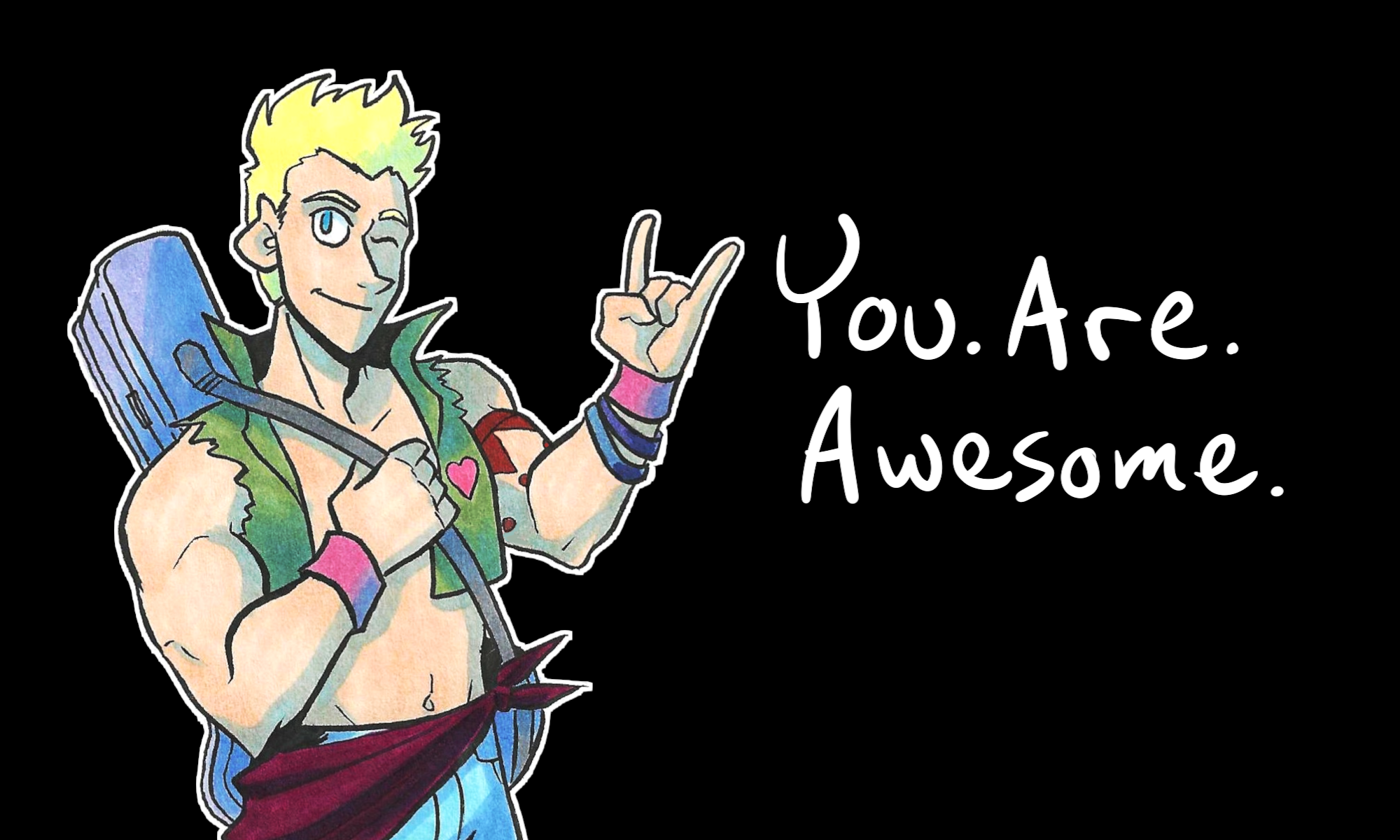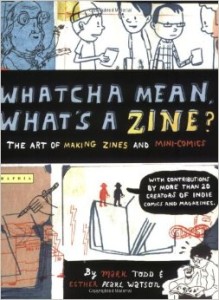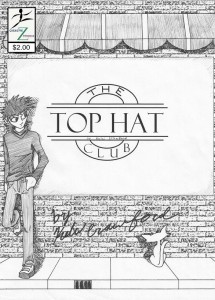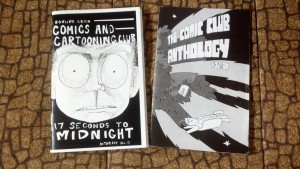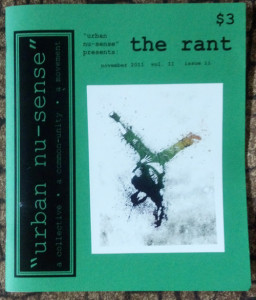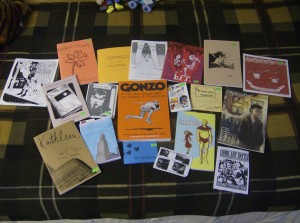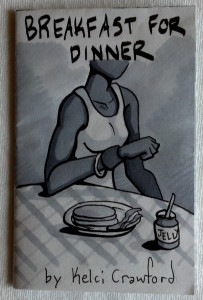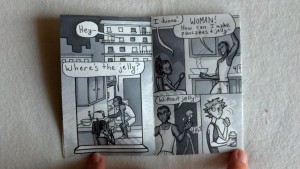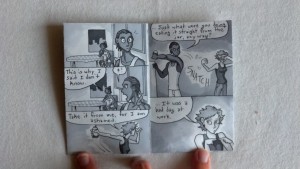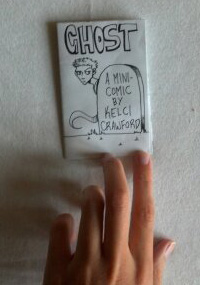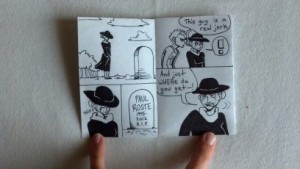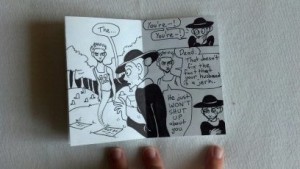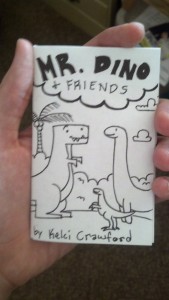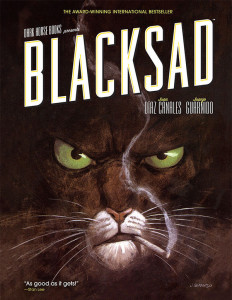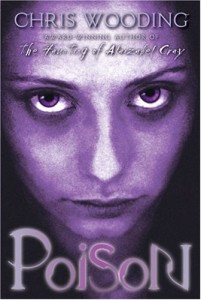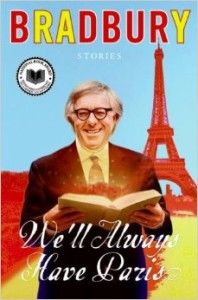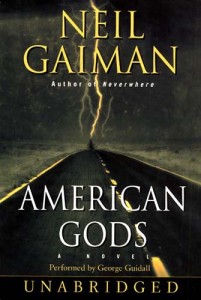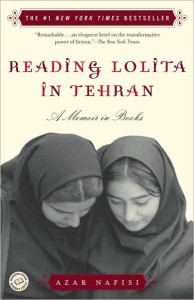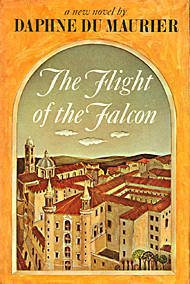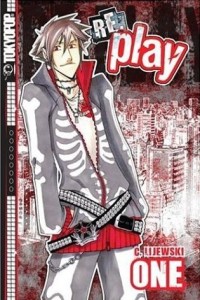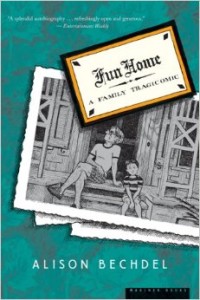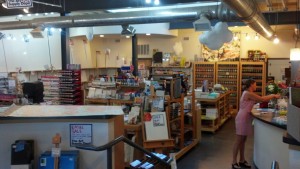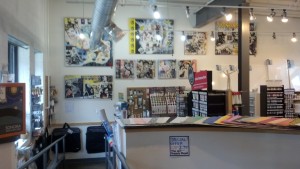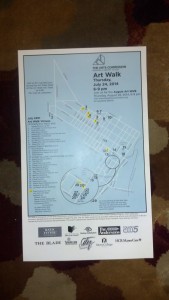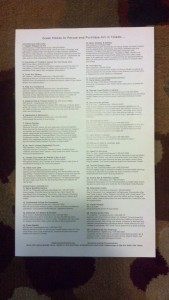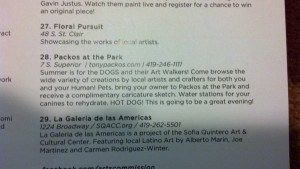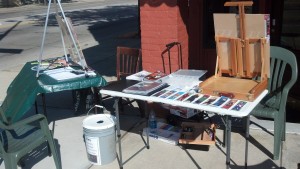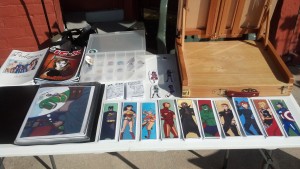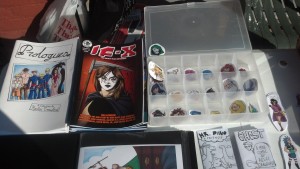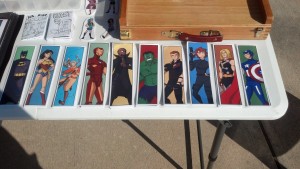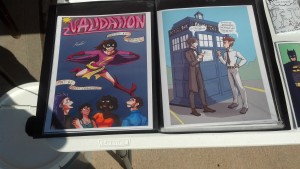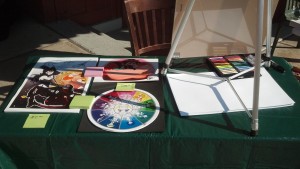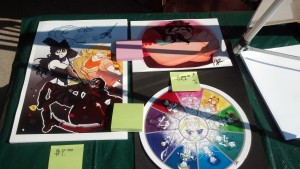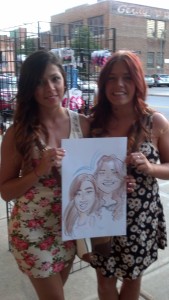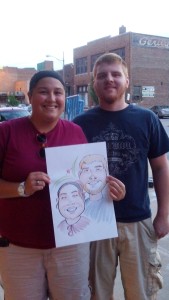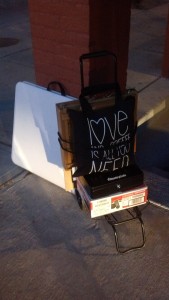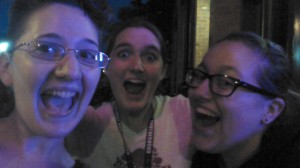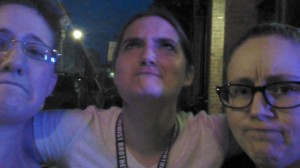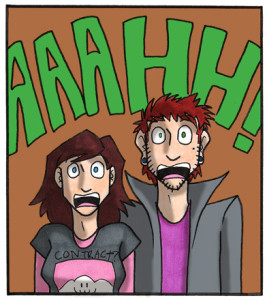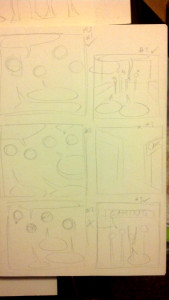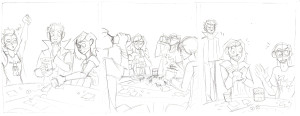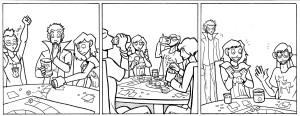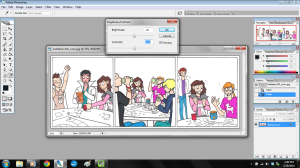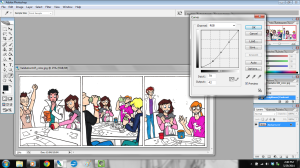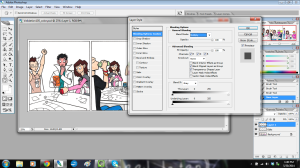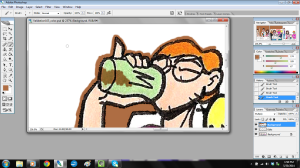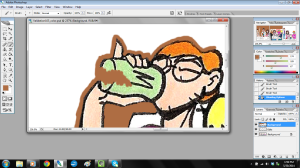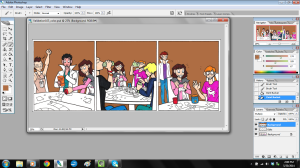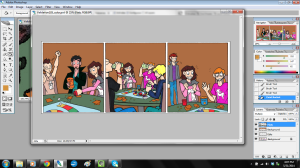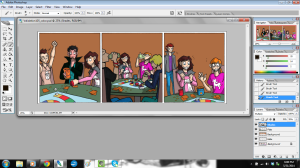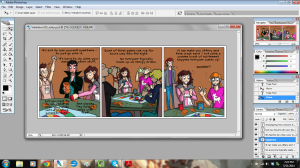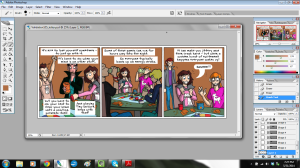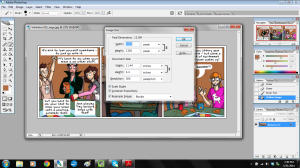Last week I talked about my reading list (and of course it has changed since then. I can be a quick reader).
This week I’d like to talk about zines, mini-comics, what they are, and how I got into them.
To the casual reader, what I just said probably wouldn’t make sense. You might be thinking, “What’s a zine? What makes a mini-comic different from other comics? What are you talking about?”
Let’s start with “What’s a zine?” The answer to this will explain a lot.
A Zine is a very independently self-published work.
I don’t mean, “I raised the money to get this book printed at a comic book printer,” self-published (that’s what’s usually meant in the comics scene when you say “self-published,” anyway).
I mean taken-to-the-photocopier-at-Staples-and-stapled-together self-published. Very indie. So indie that only a handful of bookstores across the United States actually sell them like they would at any other book store or magazine rack.
Zines are a labor of love, and not made for any kind of profit.
Zines are like magazines, and can cover a wide range of topics, from vegan recipes to feminist rants.
Mini-comics are the comics version of the zine, and can cover just as large of a variety of topics.
This is not a new phenomenon, either. The 1970s underground comix movement started as zines and mini-comics, so they have had a long, rich history, even if they have been subversive and underground.
So how did I get into them?
Well, it started before I was even aware of what I was doing, back in middle school.
In middle school, I had a small circle of friends, and we would fold up paper into pages and doodle and write jokes and stories all over them. We called these zines “The Little Books of Nuffin.” Except one time, when we made a zine called “The Little Book of Somethin’.”
But then I moved to a new school, and forgot about them.
Later, I purchased a book, called “Whatcha Mean, What’s a Zine? The Art of Making Zines and Mini-Comics” by Mark Todd and Esther Pearl Watson.
I was in high school, and I just came around to the idea of wanting to make comics for a living. At time time, I wanted to get into manga (excuse me while I laugh at myself), but I figured, “Hey, zines and mini-comics would be a great way to get my feet wet and make comics to maybe give to friends or something.”
I didn’t actually make any zines until college, in my freshman year, when I made “The Top Hat Club.”
It was short-lived – I only ever made two issues, even though at the time I wanted to make more. The story was kind of weak and the art was not at the level I wanted it to be.
So I abandoned “The Top Hat Club” and moved on.
I joined the Bowling Green Comics and Cartooning Club, where half of the artists in the club made zines and minis in their spare time. Once a year they would collaborate on one zine together, the Cartooning Club Anthology, and sell copies at a campus event, Arts X, a fundraiser for the different art departments on campus.
I participated in the Anthology for two years, until the club dissolved, and then I joined urban nu-sense.
Urban nu-sense was all about underground hip-hop, zines, and subversive art. I was involved for at least two semesters there, sharing art and open letters.
And then, in my final semester at school, my friends and I went on a class trip to Chicago.
And there, we went to one of the (if not THE) mecha of zines and mini-comics, Quimby’s Bookstore.
I spent over $50 on zines and minis and I REGRET NOTHING.
I still make mini-comics occasionally. I started with “Breakfast for Dinner,” and moved on to “Ghost”, “Jumper” (which I will probably never make public), and more recently, “Mr. Dino & Friends.”
I also have one still in the works…
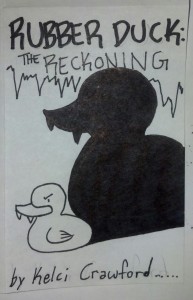 So I still enjoy making mini-comics. They’re tiny, they’re easy to make, and they’re a lot of fun!
So I still enjoy making mini-comics. They’re tiny, they’re easy to make, and they’re a lot of fun!
It’s a wonderful, tiny world to get involved in.
So have you read any zines or mini-comics? Which ones were your favorites? Please let me know in the comments below.
Thanks for reading, and I’ll see you on Wednesday!
